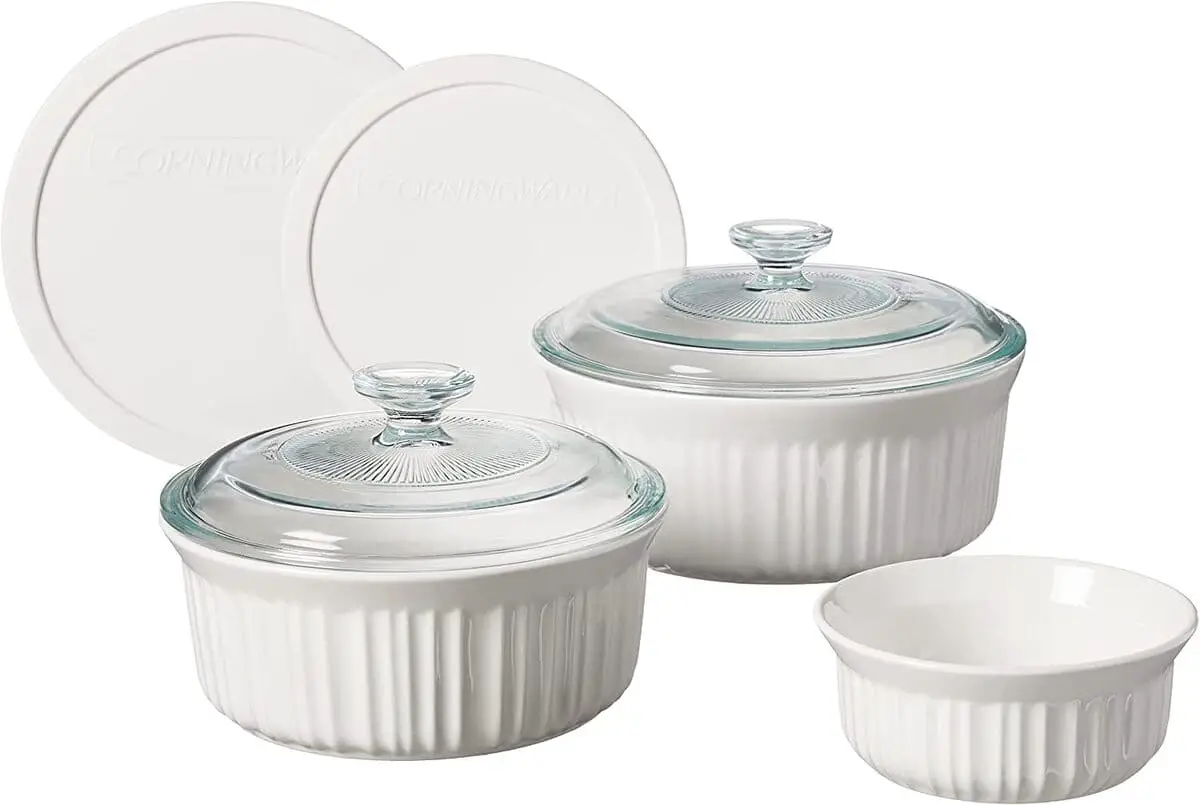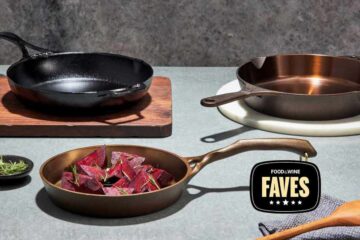Corningware is a popular brand of cookware that has been around for decades. It is known for its durability, versatility, and ability to withstand high temperatures. However, there has been some concern about whether Corningware contains lead, a toxic substance that can be harmful to human health.
According to recent research, Corningware is lead-free and safe to use. The cookware is made from glass-ceramic material that is capable of withstanding high temperatures, making it ideal for cooking and baking. Additionally, Corningware is food-safe and non-toxic, making it a popular choice for many households. While some vintage Corningware products may contain lead due to the use of lead-based paint during that era, modern versions of Corningware do not contain lead.
What is Corningware?
Corningware is a brand of cookware that has been around for decades. It is made up of glass-ceramic material that is capable of withstanding high temperatures, making it ideal for use in the oven or microwave. Corningware is also known for its durability and versatility, as it can be used for cooking, serving, and storing food.
The brand was first introduced in 1958 by Corning Glass Works, which later became Corning Incorporated. Corningware quickly became popular due to its unique properties, which allowed it to be used in a variety of cooking applications. Over the years, the brand has expanded to include a wide range of cookware products, including pots, pans, baking dishes, and more.
One of the key features of Corningware is its ability to retain heat, which allows food to cook evenly and thoroughly. It is also non-porous, which means that it does not absorb food odors or flavors. This makes it easy to clean and maintain, as well as ensuring that food tastes fresh and delicious.
Is Corningware Lead Free?
When it comes to cookware, safety is a top priority. One common concern among consumers is whether their cookware contains lead, a toxic metal that can cause serious health problems if ingested. In this section, we will explore whether Corningware is lead-free, including the history of lead in cookware, Corningware’s lead-free claim, and testing for lead in Corningware.
The History of Lead in Cookware
Lead has been used in cookware for centuries, primarily for its ability to conduct heat. However, it was later discovered that lead can leach into food and cause lead poisoning, a serious health condition that can affect the brain, nervous system, and other organs. As a result, the use of lead in cookware has been heavily regulated in many countries.
Corningware’s Lead-Free Claim
Corningware is a brand of glass-ceramic cookware that is known for its durability and versatility. According to the company, Corningware is lead-free because it is made of Pyroceram, a patented glass-ceramic material that does not contain lead or any other toxic chemicals. This claim is supported by independent testing, which has confirmed that Corningware meets current FDA lead-safety regulations.
Testing for Lead in Corningware
While Corningware is generally considered safe and lead-free, some consumers may still have concerns about the potential for lead contamination. To address these concerns, it is possible to test Corningware for lead using a lead-testing kit. However, it is important to note that these tests may not always be accurate, and that Corningware has been extensively tested and found to be safe for use as dinnerware.
Other Safety Concerns with Corningware
While Corningware is lead-free and deemed safe for use by the U.S. Food and Drug Administration, there are still some safety concerns that users should be aware of. These concerns include thermal shock, scratches and chips, and microwave use.
Thermal Shock
Corningware is made of glass-ceramic material, which is known for its ability to withstand high temperatures. However, sudden changes in temperature can cause the material to crack or break. To prevent thermal shock, it is important to avoid exposing Corningware to extreme temperature changes.
For example, never place a hot Corningware dish directly into a sink full of cold water. Instead, allow the dish to cool down to room temperature before washing it. Similarly, do not place a cold Corningware dish into a preheated oven. Instead, allow the dish to come up to room temperature before placing it in the oven.
Scratches and Chips
While Corningware is durable, it is not indestructible. Scratches and chips can occur over time, especially with regular use. These imperfections can weaken the material and make it more prone to cracking or breaking.
To prevent scratches and chips, avoid using metal utensils on Corningware. Instead, use wooden or plastic utensils. Also, avoid stacking Corningware dishes on top of each other, as this can cause scratches and chips.
Microwave Use
Corningware is microwave-safe, but it is important to use caution when heating food in the microwave. When microwaving food in Corningware, make sure the dish is not overheated. Overheating can cause the material to crack or break.
To prevent overheating, use a lower power setting on the microwave and stir the food frequently. Also, do not heat Corningware dishes that are empty or contain very little food, as this can cause overheating.
How to Use and Care for Corningware?
When it comes to using and caring for Corningware, there are a few things you should keep in mind to ensure that it lasts a long time and stays in good condition. Here are some tips to help you get the most out of your Corningware:
Cleaning and Storage Tips
Cleaning Corningware is easy and straightforward. You can wash it by hand or in the dishwasher, and it can also be cleaned with baking soda or a mild abrasive cleaner. However, you should avoid using steel wool or other abrasive pads, as they can scratch the surface of the Corningware.
When storing Corningware, make sure to stack it carefully to avoid chipping or scratching. You can also use felt or other soft materials between the pieces to protect them.
Avoiding Thermal Shock
One of the most important things to keep in mind when using Corningware is to avoid thermal shock. This occurs when the temperature of the Corningware changes too quickly, causing it to crack or break. To avoid this, you should:
- Always preheat your Corningware in the oven before adding food.
- Never place hot Corningware directly on a cold surface, such as a countertop or sink.
- Avoid placing Corningware under a broiler or on a stovetop burner.
- Allow Corningware to cool down slowly before washing or storing it.
Conclusion
In conclusion, Corningware is a popular brand of cookware that is widely used in households across the world. The question of whether Corningware is lead-free has been a topic of concern among consumers.
Based on the information gathered from various sources, it can be confirmed that Corningware is indeed lead-free. The cookware is made of a special glass-ceramic material that is non-toxic and can withstand high temperatures.
Consumer Reports have conducted testing on samples of Corningware and have found that the level of lead in the cookware is relatively low, with some samples containing as much as 0.13% lead by weight. However, it is important to note that this level of lead is still below the legal limit set by the FDA.
It is also worth noting that the current blue cornflower Corningware does not contain lead. Consumers who may have older versions of Corningware can still use them safely, as long as they are not chipped or cracked.
Overall, consumers can feel confident in using Corningware as a safe and reliable cookware option. As always, it is important to follow the manufacturer’s instructions for proper use and care of the cookware.



